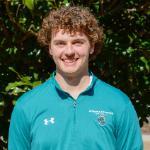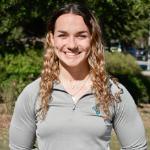RESEARCH FELLOWS
The Health and Human Performance Research Fellows (HHPRF) program, housed within the Conway Medical Center College of Health and Human Performance, provides an outlet for high-performing, highly driven HHP students to engage in quality academic research within their disciplines.
The competitive HHPRF program pairs students with faculty mentors conducting research in their respective fields and offers students a financial reward for their work. HHP Research Fellows engage in authentic research experiences in a variety of applied, clinical, experimental, community, industry, and case study settings across two semesters.
Research Fellows must:
- Have an enthusiasm for the field/discipline and a sincere interest in participating in research.
- Have completed 75 credit hours at the time of application.
- Hold and maintain a minimum 3.0 GPA while participating as a HHPRF.
- Not have an academic integrity violation prior to or during their participation in SCRF.
- Have available time in their academic and work schedule to complete Fellow requirements successfully.
- Present their research at the conclusion of their experience. This can be in an internal outlet (Undergraduate Research Competition) or in an external, peer-reviewed venue (conference, symposium, publication, etc.).
Current Research Initiatives


 The Effects of Tart Cherry Juice Supplementation on Sleep Quality in Female Collegiate Beach Volleyball Athletes
The Effects of Tart Cherry Juice Supplementation on Sleep Quality in Female Collegiate Beach Volleyball Athletes
Fellows: Jenna Downey, Jake Heydon
Faculty: Brandon Willingham, Ph.D., R.D.
About the research: The goal of this study is to assess the sleep quality and quantity of female collegiate beach volleyball athletes. Researchers will collect baseline data without an intervention prior to education on proper sleep hygiene (e.g., behaviors, environments, and methods to promote quality sleep) and determine participants' sleep quality. Tangentially, researchers will evaluate body composition, dietary intake, energy expenditure, and perceived recovery. Researchers will intervene with tart cherry juice to determine if it can enhance sleep quality compared to baseline or sleep hygiene education. Results will help researchers determine if free sleep hygiene education intervention is adequate to enhance sleep quality or if nutritional variables may be leveraged to enhance sleep-related outcomes.

 Physiological Responses to Differing, Work-Matched High-Intensity, Interval Exercise (HIIE) Protocols
Physiological Responses to Differing, Work-Matched High-Intensity, Interval Exercise (HIIE) Protocols
Fellow: Aiden Discordia
Faculty: Timothy Rotarius, Ph.D.
About the research: Researchers aimed to identify if there is a potentially superior method of performing high-intensity interval training (HIIT). Researchers examined the acute effects of two different high-intensity cycling exercises on muscle activation, muscle oxygenation, and the metabolic cost of exercise. During the data collection phase, researchers looked at heart rate, VO2, VE, EMG, and muscle oxygenation changes to a more traditional style of HIIT training (square-wave function), and compared them to a ramped increase in exercise intensity. The ramping protocol terminated at supramaximal intensities, but both protocols required participants to perform the same amount of work.

 Effect of Interval Duration during Low-Intensity Blood Flow Restricted Aerobic Exercise
Effect of Interval Duration during Low-Intensity Blood Flow Restricted Aerobic Exercise
Fellow: Jake VanArsdale
Faculty: Justin Guilkey, Ph.D.
About the research: This study examines the effect of work interval duration on the local metabolic stress and cardiac work during low-intensity aerobic exercise with blood flow restriction (BFR). On separate days, participants will complete three experimental interval exercise protocols with intermittent BFR, in a random order. All protocols will consist of a 4-min warm-up ([20 W] WU), work INTs (35% peak power), and 1-min recovery INTs (20 W) between work INTs. During work INTs, BFR cuffs will rapidly inflate to 60% of limb occlusion pressure (LOP) and deflate during recovery INTs. Blood pressure will be taken manually and rate pressure product will be calculated to assess cardiac work. Gas exchange, heart rate, and tissue oxygen saturation (StO2) of the quadriceps via near-infrared spectroscopy will be collected throughout the exercise to determine muscular stress. It is hypothesized StO2 will have a greater decrease from WU and RPP will be greater, suggesting greater local metabolic stress and cardiac work in 4-min INT compared to 1-min INT and 2-min INT. If the hypothesis is confirmed, training with longer intervals could elicit greater local adaptations, but cardiac work will be increased during training.

 A Comparison of Methods to Determine Intensity During Aerobic Exercise with Blood Flow Restriction
A Comparison of Methods to Determine Intensity During Aerobic Exercise with Blood Flow Restriction
Fellow: Gianna Curto
Faculty: Jakob Lauver, Ph.D.
About the research: One potentially problematic methodological approach has been the use of heart rate to proscribe exercise intensities during aerobic exercise with BFR, as the addition of BFR has been shown to result in an increased heart rate at the same work rate compared to free-flow conditions. This would result in a lower than desired work rate (exercise intensity) and therefore training volume during aerobic exercise with BFR. The decreased training volume would then make comparisons to free-flow conditions difficult as the decreased training volume would impact training adaptations. This study aims to compare the physiological responses to two different methods of prescribing and monitoring exercise intensity when using BFR, namely Heart Rate and Work Rate.


